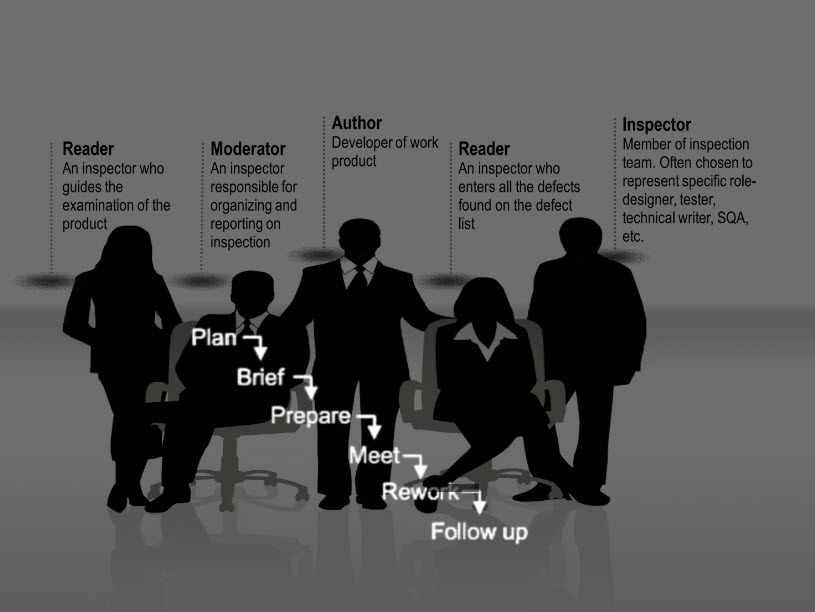
Differences between software walkthrough, review, and inspection
Last updated: November 08, 2025 Read in fullscreen view
- 15 Feb 2024
 What is a Cut-Over in Software Development? 38/1197
What is a Cut-Over in Software Development? 38/1197 - 28 Oct 2023
 The GOLDEN Rules of Software Engineering 27/522
The GOLDEN Rules of Software Engineering 27/522 - 20 Jan 2022
 Difference between Bug, Defect, Error, Fault & Failure 22/1240
Difference between Bug, Defect, Error, Fault & Failure 22/1240 - 08 Dec 2021
 What Are The 4 Types of Maintenance Strategies? 20/1031
What Are The 4 Types of Maintenance Strategies? 20/1031 - 17 Oct 2022
 What is the difference between low-end, mid-end and high-end solutions of project management software? 19/1350
What is the difference between low-end, mid-end and high-end solutions of project management software? 19/1350 - 02 May 2022
 Difference between CapEx vs. OpEx: Two Ways to Finance Your Software Project 12/1433
Difference between CapEx vs. OpEx: Two Ways to Finance Your Software Project 12/1433 - 31 Oct 2025
 Cloud-Based Testing for Retail: Faster, Smarter, Scalable 12/38
Cloud-Based Testing for Retail: Faster, Smarter, Scalable 12/38 - 03 Aug 2022
 What Are OLAs? SLAs vs OLAs vs UCs: What’s The Difference? 11/970
What Are OLAs? SLAs vs OLAs vs UCs: What’s The Difference? 11/970 - 13 Oct 2021
 What is Bug Convergence? Why is it important for User Acceptance Testing (UAT)? 8/684
What is Bug Convergence? Why is it important for User Acceptance Testing (UAT)? 8/684 - 02 Dec 2022
 3 Levels of Quality in KANO Analysis Model 8/1000
3 Levels of Quality in KANO Analysis Model 8/1000 - 13 May 2022
 IT Training and Development: The most effective options for upskilling IT staff 7/1021
IT Training and Development: The most effective options for upskilling IT staff 7/1021 - 14 Oct 2021
 Stream Story - Low land stream or fast moving stream? 6/569
Stream Story - Low land stream or fast moving stream? 6/569 - 01 Feb 2024
 How long does it take to develop software? 6/210
How long does it take to develop software? 6/210 - 24 Nov 2021
 What is the difference between off-the-shelf software and customized software? 5/428
What is the difference between off-the-shelf software and customized software? 5/428 - 21 Jun 2022
 Difference between Quality and Grade 4/698
Difference between Quality and Grade 4/698 - 05 May 2021
 TIGO Magic Scale - PoC tool for you to apply dichotomous thinking before submitting RFP 4/297
TIGO Magic Scale - PoC tool for you to apply dichotomous thinking before submitting RFP 4/297 - 07 Dec 2021
 What's the difference between soft freeze, hard freeze and customization freeze? 4/1130
What's the difference between soft freeze, hard freeze and customization freeze? 4/1130 - 10 Apr 2022
 Difference Between Forward and Backward Reasoning in AI 4/1576
Difference Between Forward and Backward Reasoning in AI 4/1576 - 03 Nov 2022
 Questions and answers about Kano Model 3/805
Questions and answers about Kano Model 3/805 - 15 Aug 2023
 Production-Ready vs Feature-Complete: What’s the Difference? 3/157
Production-Ready vs Feature-Complete: What’s the Difference? 3/157 - 04 Mar 2023
 [Medium] Box-Ticking: The Management Strategy That’s Killing your Productivity 3/518
[Medium] Box-Ticking: The Management Strategy That’s Killing your Productivity 3/518 - 02 May 2022
 What Is RAID in Project Management? (With Pros and Cons) 2/734
What Is RAID in Project Management? (With Pros and Cons) 2/734 - 10 Jan 2024
 Like for Like – how to preserves existing business and leverage technological advancement 2/336
Like for Like – how to preserves existing business and leverage technological advancement 2/336 - 01 Feb 2022
 Outstaffing Vs. Outsourcing: What’s The Difference? 2/565
Outstaffing Vs. Outsourcing: What’s The Difference? 2/565 - 18 Mar 2022
 Difference between Project Management and Management Consulting 2/321
Difference between Project Management and Management Consulting 2/321 - 05 May 2022
 DAM vs. CMS: What's the difference? 2/443
DAM vs. CMS: What's the difference? 2/443 - 01 Oct 2020
 Handling tight project deadlines as a business analyst 1/313
Handling tight project deadlines as a business analyst 1/313 - 09 Dec 2021
 Customer Service vs Technical Support: What’s The Difference? 1/223
Customer Service vs Technical Support: What’s The Difference? 1/223 - 06 Jun 2024
 Software Upgrade vs Software Update: What is the difference? 1/212
Software Upgrade vs Software Update: What is the difference? 1/212 - 15 Aug 2025
 Quantum Technology: Global Challenges and Opportunities for Innovators /56
Quantum Technology: Global Challenges and Opportunities for Innovators /56 - 20 Oct 2025
 How to Automate API Testing for Faster Release Cycles? /59
How to Automate API Testing for Faster Release Cycles? /59 - 21 Oct 2025
 Cloud-Native Development: Why It’s the Future of Enterprise IT /40
Cloud-Native Development: Why It’s the Future of Enterprise IT /40 - 10 Oct 2023
 Exploratory Testing: A Creative and Adaptive Approach to Software Quality /39
Exploratory Testing: A Creative and Adaptive Approach to Software Quality /39 - 25 Jan 2022
 What is the difference between Outsourcing and Outstaffing? /261
What is the difference between Outsourcing and Outstaffing? /261 - 11 Oct 2021
 10 Myths About Low-End Project Management Software /274
10 Myths About Low-End Project Management Software /274 - 15 Sep 2022
 CRM vs CDP: What's the difference? /236
CRM vs CDP: What's the difference? /236 - 10 Nov 2021
 PoC vs. Prototype vs. MVP: What’s the difference? /719
PoC vs. Prototype vs. MVP: What’s the difference? /719 - 02 Nov 2021
 Difference between an ESTIMATE and a QUOTE /342
Difference between an ESTIMATE and a QUOTE /342 - 01 Apr 2022
 Dedicated Team vs. Extended Team: What’s the difference? /298
Dedicated Team vs. Extended Team: What’s the difference? /298
There are several methods to identify defects during the software development. (Review, walkthrough and Inspection) The most effective is software formal inspection or Fagan inspection as it was developed by Michael Fagan of IBM in the 70s.
According to this method, inspection must be formal; materials to be inspected must be prepared and meet the inspection entry criteria; and people who inspect must be qualified, as well as the time and place must be arranged ahead of time. There are formal roles for each participant and they must be trained in the method. (Moderator, Recorder, Inspectors, Author as minimum) The participants must review the materials ahead of the meeting (At least few days). The main purpose of the inspection meeting is only to find defects NOT solution. After the inspection, the author of the work (i.e., developer) must rework all defects. There is a follow up session where the inspection moderator, quality assurance or sometime the entire inspection team will review to verify that all defects have been fixed and no additional defects have been introduced.
Software inspection is a method of static testing to verify that software meets its requirements. It engages the developers and others in a formal process of investigation that usually detects more defects in the product -- and at lower cost -- than does machine testing. Users of the method report very significant improvements in quality that are accompanied by lower development costs and greatly reduced maintenance efforts.
Since introducing the inspection process in 1974, IBM achieved significant improvements in quality. The company nearly doubled the number of lines of code shipped for System/370 software products since 1976, while the number of defects per thousand lines of code was reduced by two-thirds (Michael Fagan, pictured).
A Fagan inspection is a process of trying to find defects in documents (such as source code or formal specifications) during various phases of the software development process. It is named after Michael Fagan, who is credited with the invention of formal software inspections.
The stages in the inspections process are: Planning, Overview meeting, Preparation, Inspection meeting, Rework and Follow-up. The Preparation, Inspection meeting and Rework stages might be iterated.
- Planning: The inspection is planned by the moderator.
- Overview meeting: The author describes the background of the work product.
- Preparation: Each inspector examines the work product to identify possible defects.
- Inspection meeting: During this meeting the reader reads through the work product, part by part and the inspectors point out the defects for every part.
- Rework: The author makes changes to the work product according to the action plans from the inspection meeting.
- Follow-up: The changes by the author are checked to make sure everything is correct.
Reviews and Walkthroughs are not as formal as Inspection but they are useful and can be used in addition to formal inspections. Basically a walkthrough is a group review of any technical product by people who work on the same project. (It could be programmers, designers, developers, or anyone who may be involved in various phases of the project) to look into someone ‘s work and made comments regarding defects. As a non-formal, a walkthrough should not include the project managers, the director, or users. The reason for walkthrough is to identify errors as quickly as possible. A walkthrough can take place at anytime and anywhere in the development of a software product.
A review is more formal than a walkthrough but not as formal as an inspection. Reviews that are usually conducted at the end of each phase in the software development lifecycle such as requirements review, architecture review, or design review. The purpose of reviews is to make sure that everything that need to be done in a lifecycle phase are done so developers can go on to the next phase. As a general checking point, it may not catch errors as an inspection. Review does involve the project manager, the director or customers and users.






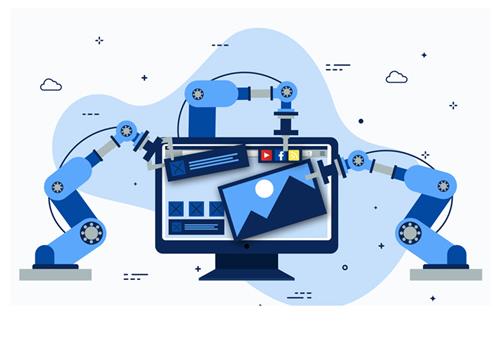
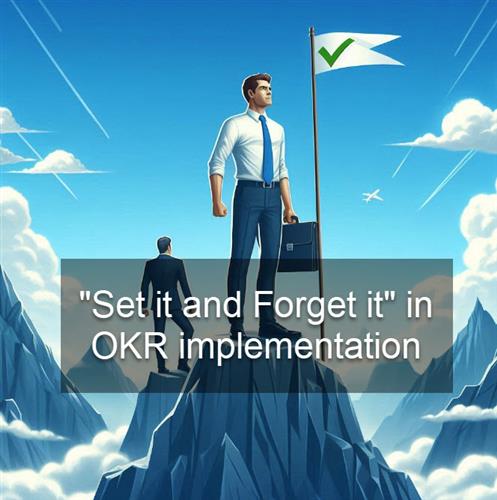
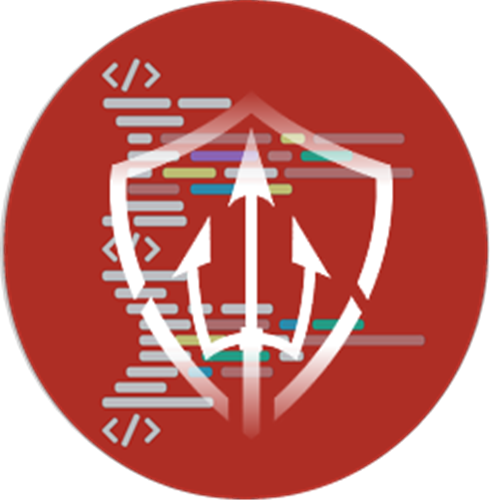



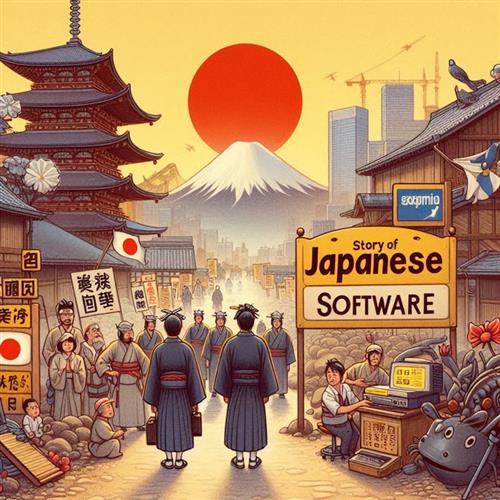

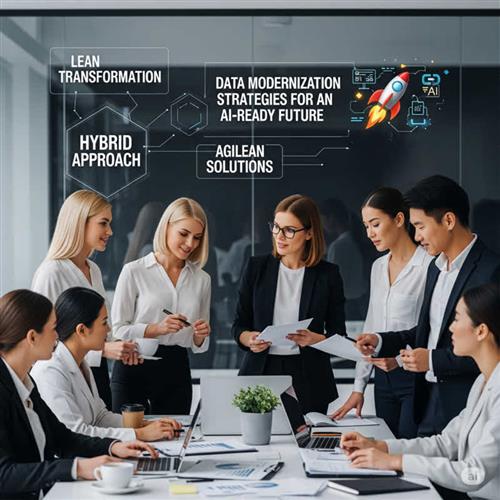

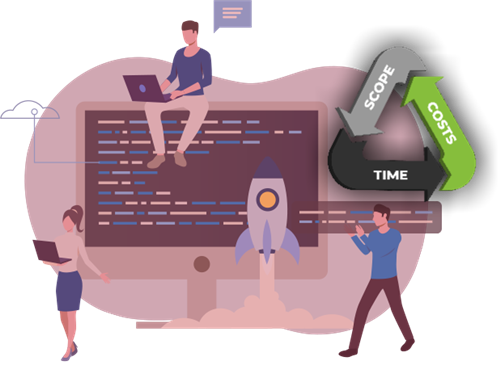

















 Link copied!
Link copied!
 Recently Updated News
Recently Updated News